Unleash the Jungle Vibe at Home with Stunning Monstera Plants
Monstera is not just a beautiful houseplant but also a symbol of modern living. This article will give you a deeper understanding of the significance of Monstera in culture and how to seamlessly integrate this plant into your living space in a harmonious and striking way.
Overview of Monstera
Monstera is a genus comprising around 50 species of flowering plants in the Araceae family, native to tropical forests in Europe and the Americas. The genus was first discovered in the wild in 1963 by French botanist Charles Plumer. The scientific name Monstera comes from Latin, meaning “monstrous” or “abnormal,” reflecting the unique split and perforated leaves of these plants. Monstera is often referred to as the "green forest monster," symbolizing tropical flora. Commonly, Monstera is also known as the Swiss Cheese Plant or Cheese Plant due to the holes in its leaves resembling Swiss cheese.
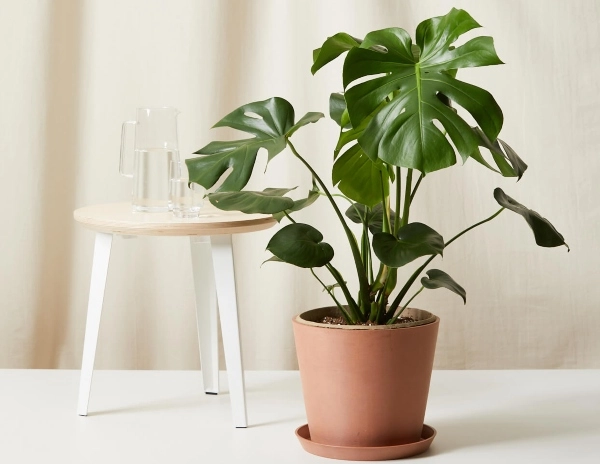
Despite its popularity and prominence in the plant world, Monstera's name has become commercialized over time, leading to some confusion.
Popular Monstera Species
1. Monstera Deliciosa
Monstera Deliciosa is the most famous "Swiss Cheese Plant" among houseplant enthusiasts. The name "Deliciosa" means "delicious" because this tropical plant produces a fruit with a sweet flavor, known as "Mexican Breadfruit." The fruit resembles an ear of corn with green hexagonal scales. When ripe, it emits a sweet aroma reminiscent of a mix between pineapple and banana, with a flesh similar to cherimoya. The ripe fruit has become a sensation in online communities, with many people scrambling to find it. However, caution is needed as unripe fruit contains calcium oxalate and potassium oxalate, which can irritate the mouth and throat.
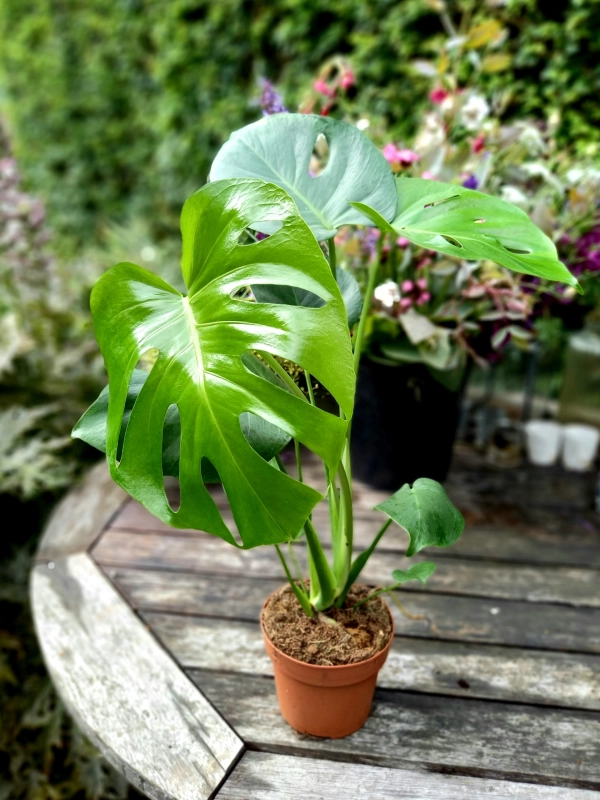
Monstera Deliciosa thrives in moist tropical forests, extending from North America and Central America to Mediterranean regions, the Atlantic, and parts of Asia. Young leaves are heart-shaped and soft, while mature leaves turn dark green, become thicker, and develop the characteristic holes. These holes allow light to penetrate and nourish the leaves below.
In addition to the classic green Monstera Deliciosa, variegated varieties are highly sought after:
- Monstera Deliciosa Albo Variegata: This variety features cream-colored streaks on the leaves, creating a striking contrast. The white color results from a natural mutation lacking chlorophyll, so the plant needs adequate light to maintain its coloration.
- Monstera Deliciosa Thai Constellation: With leaves that seem to be filled with brilliant stars, this mutated Monstera was developed in Thailand in the late 1990s. Its color stability is better compared to the Albo variety.
- Monstera Deliciosa Aurea Variegata: This variety has creamy yellow mixed with green, creating a marble-like pattern. It requires abundant light to keep its distinctive color.
2. Monstera Borsigiana
Monstera Borsigiana is considered a subspecies of Monstera Deliciosa, native to Central America, Mexico, and Panama. Both species look quite similar, especially when young. However, Monstera Borsigiana grows faster, has smaller leaves, and features random, uneven cuts compared to Monstera Deliciosa.
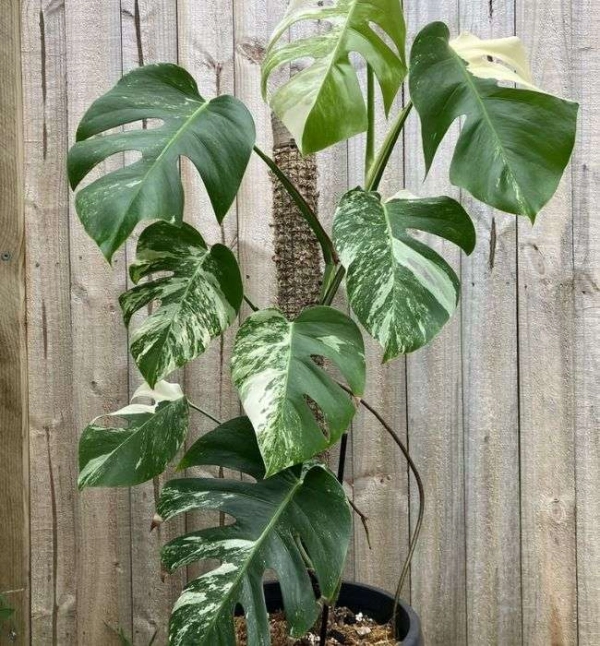
3. Monstera Adansonii
Also known as "Swiss Cheese Vine" or "Five Holes Plant," Monstera Adansonii is notable for its smaller leaves with densely spaced perforations. It originates from Central and South America and some Caribbean islands. Monstera Adansonii has two leaf forms:
- Monstera Adansonii Round Form: Leaves are heart-shaped or slightly round, with a wider surface and growing in various directions.
- Monstera Adansonii Narrow Form: Leaves are oval-shaped with a pointed tip, growing in a single direction.
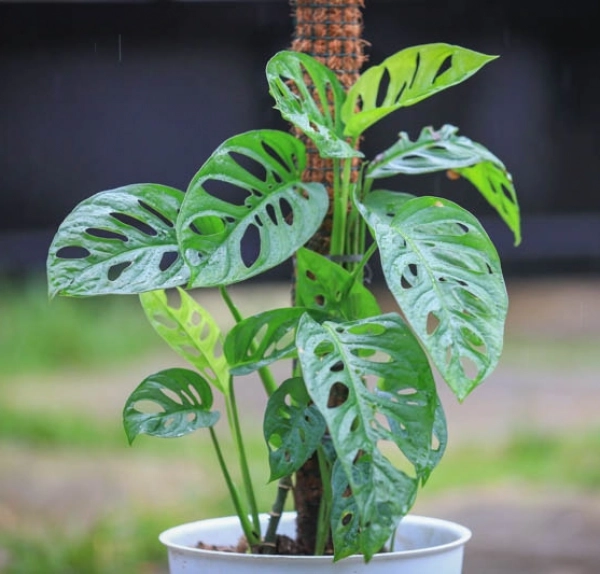
4. Monstera Dubia
Monstera Dubia is known for its dramatic change in appearance from juvenile to mature stages. Initially, its leaves resemble Scindapsus with silver-patterned, heart-shaped foliage. As it matures, the leaves become elongated and more like Monstera Deliciosa. It thrives when climbing around a moss pole and is found in the tropical rainforests of Central and South America.
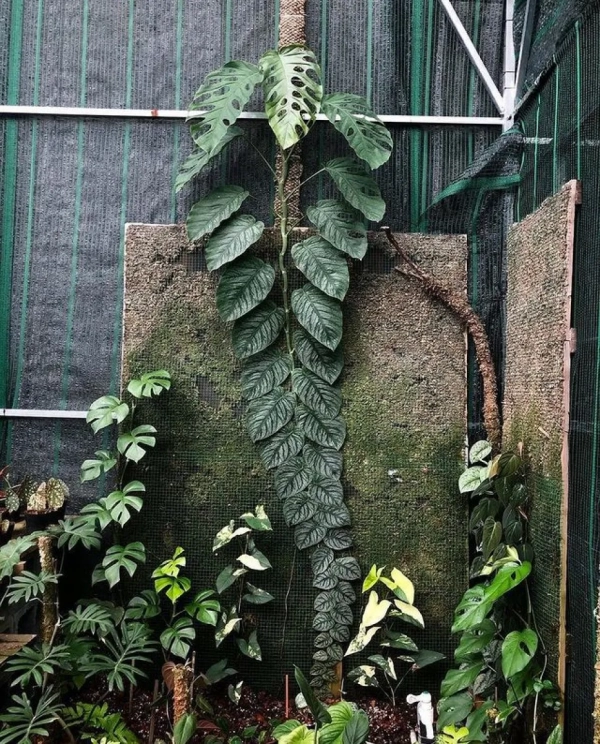
5. Monstera Obliqua
Monstera Obliqua features thin leaves with large perforations that give the appearance of being "eaten away." These holes are much larger compared to Monstera Adansonii, leaving only the fragile leaf framework. This unique and unusual look makes Monstera Obliqua highly sought after by enthusiasts of exotic and distinctive houseplants.
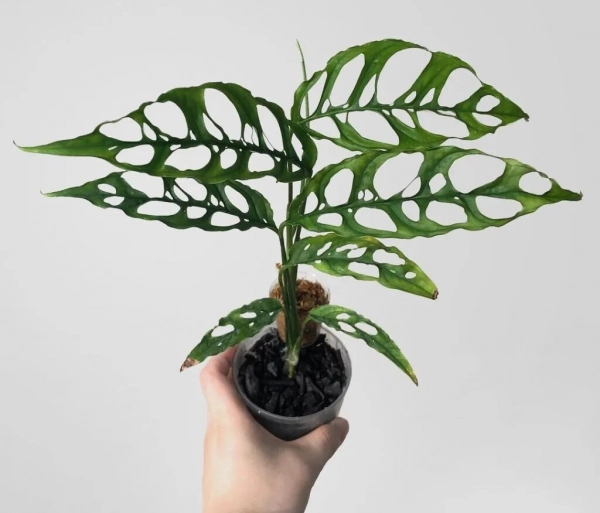
Monstera Care Guide
1. Light
Monstera is a tropical plant that requires medium to bright, indirect light to thrive. Variegated Monstera varieties, in particular, need more light to maintain their distinctive leaf coloration. However, it's important to avoid strong direct sunlight, as it can cause leaf burn and diminish the plant's aesthetic appeal. An ideal location is near a window with filtered light, such as one covered with a sheer curtain.
2. Watering
Watering Monstera should be adjusted based on environmental conditions. During sunny months, water regularly to keep the soil moist, but ensure proper drainage to prevent waterlogging. In rainy seasons or cooler weather, reduce the frequency of watering, as the soil will take longer to dry out.
3. Temperature and Humidity
Monstera prefers a medium to high humidity environment. To keep the leaves lush and prevent them from becoming crispy or wrinkled, you may need to increase humidity by misting, especially during dry or hot conditions. The ideal temperature range for Monstera is between 18-30°C (65-85°F).
4. Soil
The soil for Monstera should be well-aerated and well-draining. You can use a mix of coconut coir, pine bark, and perlite to keep the soil loose and promote strong root growth. This is crucial to avoid waterlogging and keep the plant healthy.
5. Fertilizing
Young Monstera plants in pots do not require a lot of fertilizer. You can apply diluted fertilizer during the dry season or use slow-release fertilizers to provide nutrients gradually. Organic fertilizers or those specifically designed for houseplants are also good options to support robust growth.
Common Issues with Monstera and How to Address Them
1. Pests and Diseases
Monstera is susceptible to pests such as mealybugs, spider mites, whiteflies, and thrips, especially when the plant is young. These pests can sap the plant's vitality by sucking out its sap, causing leaves to yellow and weakening the plant. To protect Monstera, inspect it regularly for signs of pests. If detected, use preventive measures such as applying biological insecticides or a diluted soap solution to spray the plant.
2. Yellowing Leaves
Yellowing leaves on Monstera are often related to improper care. Common causes include overwatering, which leads to waterlogged soil; underwatering, causing the plant to wilt; or insufficient light for photosynthesis. When yellowing occurs, identify the specific cause and adjust care practices: check soil moisture, ensure the plant receives adequate indirect light, and maintain an appropriate watering schedule.
3. Root Rot
Root rot is a serious issue commonly caused by overwatering or poorly draining soil, which causes roots to sit in stagnant water. Signs include wilting leaves, a soft and weak stem, and brown, mushy roots with a foul odor. To address this, trim away the affected roots, replace the soil with a more aerated mix, and adjust watering practices to prevent waterlogging.
4. Toxicity
Monstera contains insoluble calcium oxalate crystals that can cause irritation to the skin, mouth, and throat if touched or ingested. While the plant is not highly toxic, care should be taken, especially around young children and pets. If sap comes into contact with the skin, wash it off immediately to prevent irritation. The fruit of Monstera is edible when ripe, but other parts of the plant, including the sap, can cause discomfort.
Frequently Asked Questions About Monstera
1. Does Monstera need to climb?
Monstera is a natural climbing plant, so it's beneficial to provide it with a support structure like a moss pole or a sphagnum moss trellis to encourage the development of aerial roots. However, if you prefer the softer look of a trailing plant, you can also let it cascade, depending on your personal preference or decorating space.
2. Does Monstera need a lot of light?
Monstera requires indirect light with moderate intensity to thrive and to allow its distinctive fenestrated leaves to develop properly. Place the plant near a south or west-facing window to ensure it gets enough light, but avoid direct afternoon sunlight. Using a sheer curtain can help diffuse intense light if the plant is close to a west-facing window.
3. How can you tell if your Monstera is thirsty?
You can determine if your Monstera needs water if the leaves appear soft and limp or if they curl inward. For a more accurate check, insert your finger into the top layer of soil. If the top inch of soil is dry, it’s time to water the plant.
4. How can I make my Monstera bushier?
To make your Monstera bushier, you can trim back long vines to propagate new cuttings. Once the cuttings develop roots, replant them into the main pot. The more cuttings you propagate and add to the pot, the denser and bushier the plant will become.
5. What are the pros and cons of Monstera?
The major advantage of Monstera is its unique leaf shape, the aesthetic appeal of its climbing habit, and the relatively simple care once you are familiar with its needs. On the downside, Monstera is toxic to pets and requires higher humidity for optimal growth, although it can still thrive in average humidity conditions.
Tags: Indoor Ornamental Plants | Outdoor Ornamental Plants | Bonsai Plants | Aquatic Ornamental Plants | Miniature Ornamental Plants |











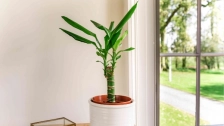
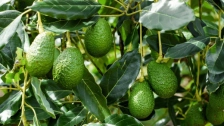
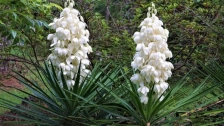





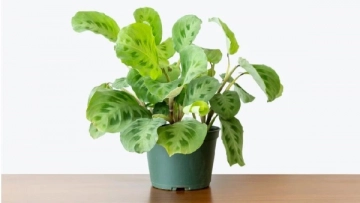

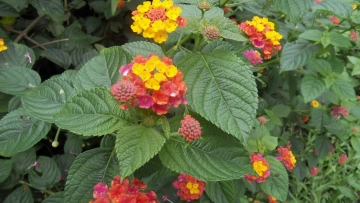
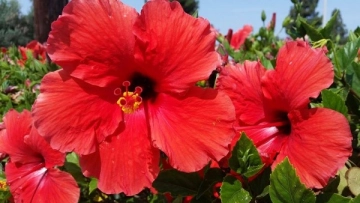
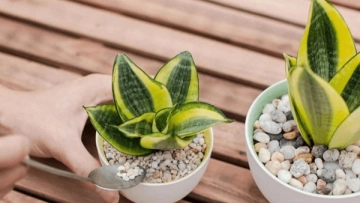
LEAVE A REPLY
Your email address will not be published. Required fields are marked *